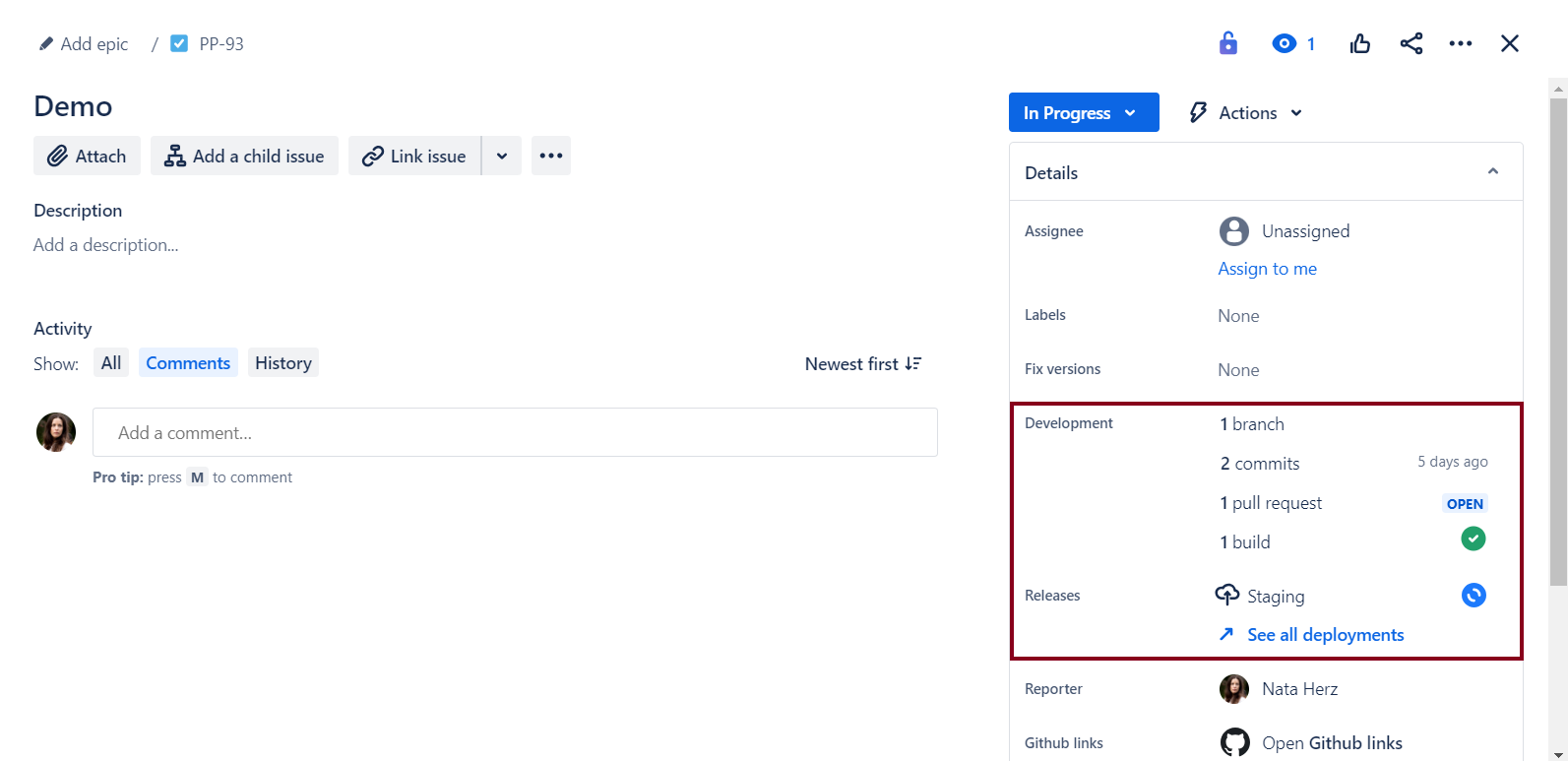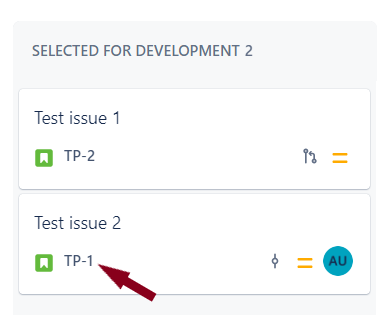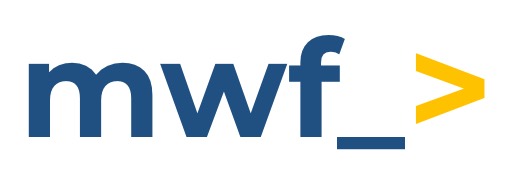How to find Jira issue key?
Integrating Azure DevOps with Jira enhances visibility and traceability between code changes and project management. Here's how you can include issue keys in these changes.
When you include issue keys in branch names, commit messages, and pull requests, you’ll see development information on the Jira issue’s development and releases panels.

Find the issue key
In Jira, the issue key is a unique identifier associated with each individual issue. It is typically a short code, often consisting of uppercase letters followed by a hyphen and a number (e.g., TP-2). Here are several ways to find the Jira issue key:
If your Jira instance uses Agile boards (Scrum or Kanban boards), the issue key is usually visible on the board, at the bottom of a card:

Issue cards also display development icons (on the right bottom corner) to indicate when they have pull requests, branches, or commits associated with them.
When you open a Jira issue, the issue key is usually displayed prominently in the breadcrumb navigation at the top of the issue page:

The Jira issue key is a part of the issue's URL. When you navigate to an issue, check the URL in your browser's address bar for the issue key. It is typically located after the last slash.

Reference issues in development activities
Once, you find the Jira issue key for the necessary task, you must reference it in commits, branches, and pull requests to display development activity in Jira. When you reference Jira issues, you include the issue key in commit messages, branch names, pull request title or description to create a connection between your development activities and the associated Jira tasks.
More details are here.
Also you can navigate to Atlassian Support portal: Reference issues in your development work
Azure DevOps for Jira helps integrate Jira with Azure DevOps.
Updated:
